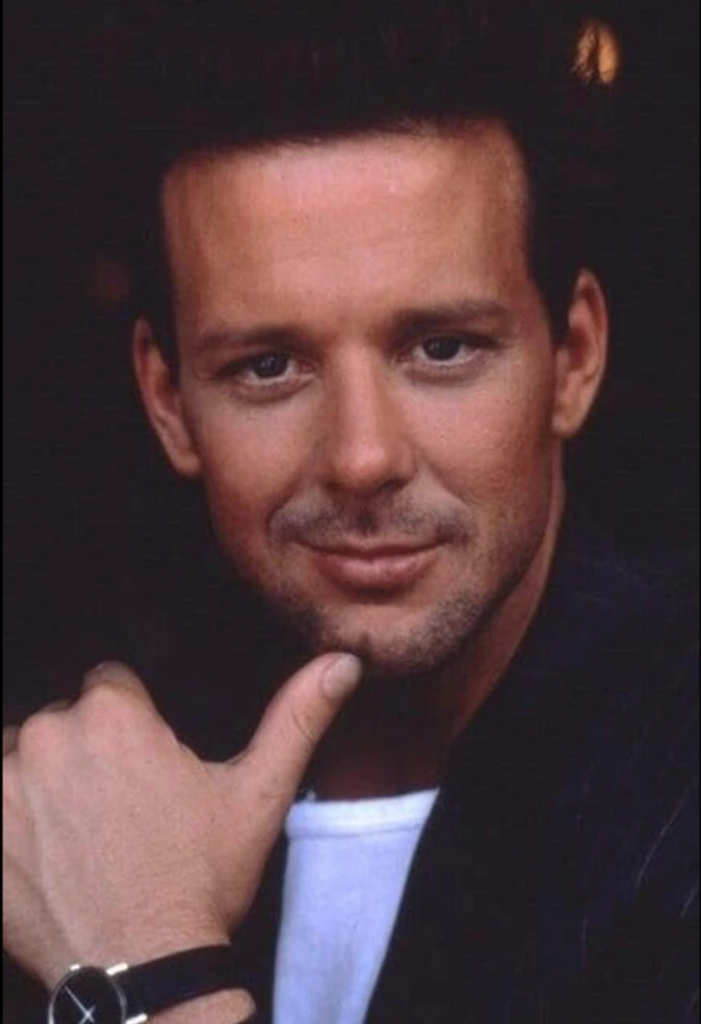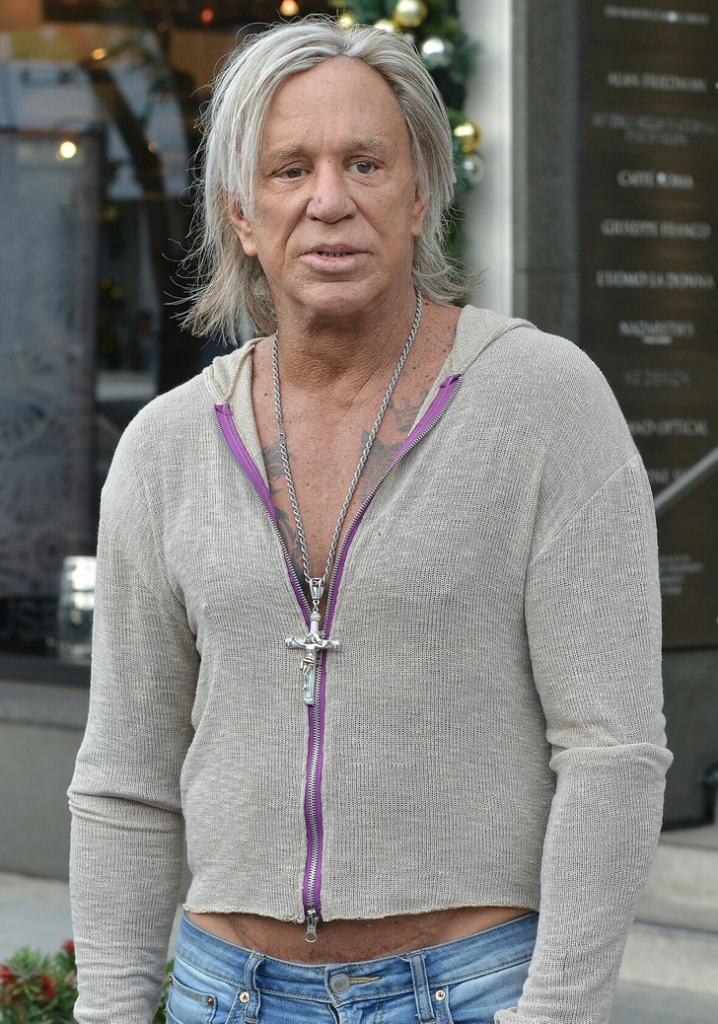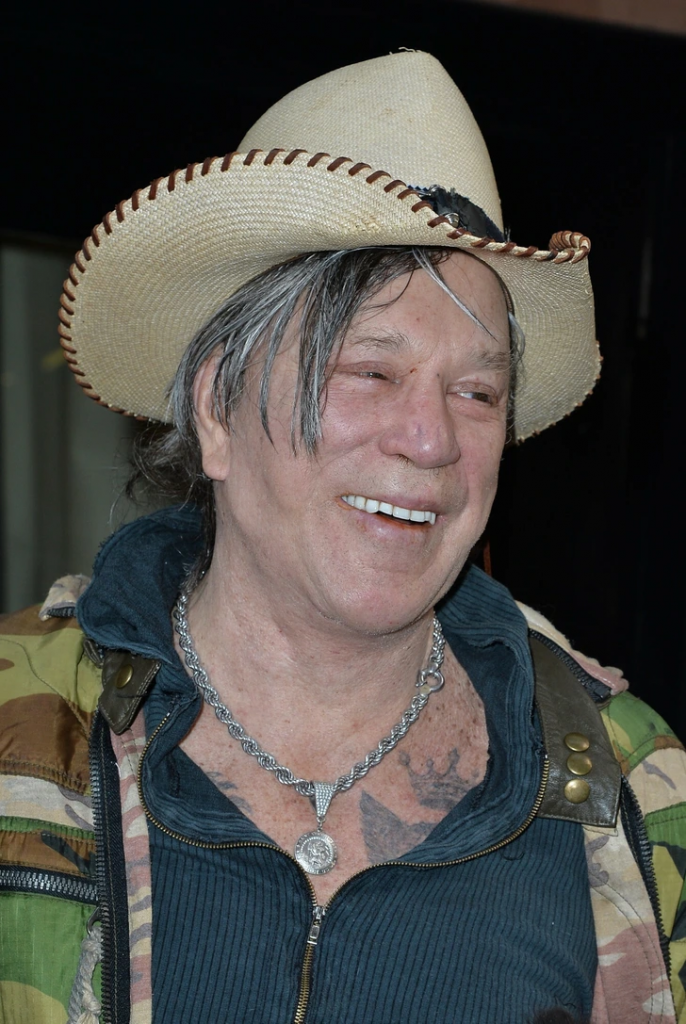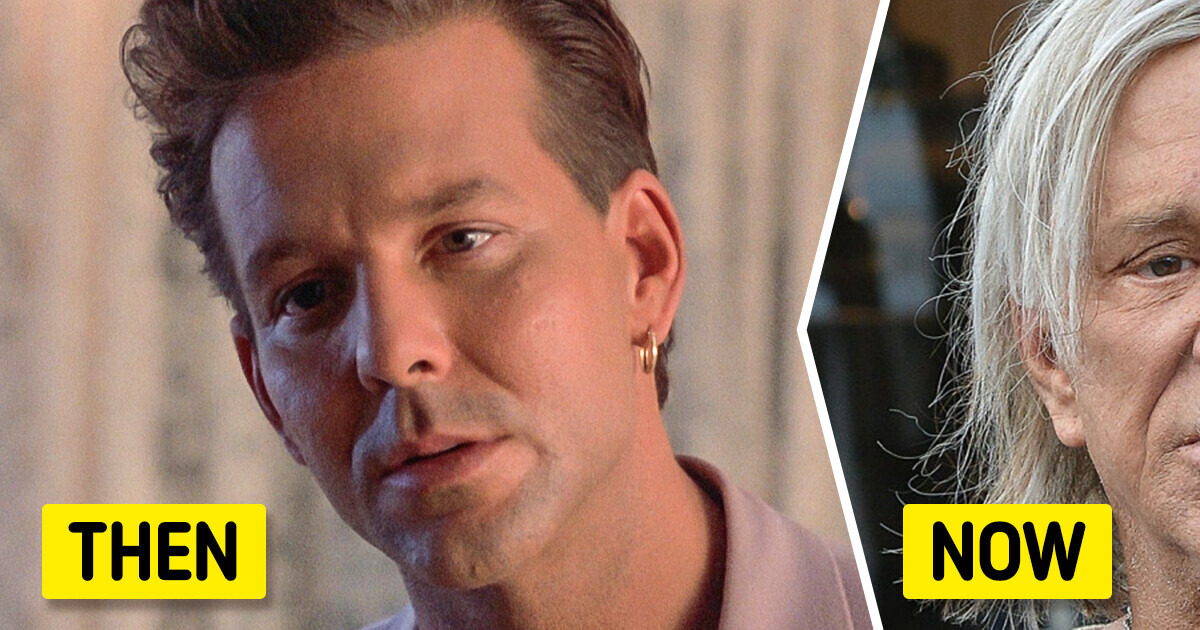Mickey Rourke’s life and career unfold as a tale of remarkable talent, fierce ambition, and an unyielding quest for personal meaning. Known in the 1980s for his intense screen presence and captivating roles, Rourke epitomized Hollywood charisma and raw, unfiltered emotion. But his story also speaks to the challenges of celebrity, the inner struggles that come with fame, and the winding journey of self-redemption. More than a tale of physical transformation, it’s a story of resilience, a cautionary reminder, and an inspiration to those who have faced their own battles.

Rising to Fame: The Golden Era of Mickey Rourke
In the early 1980s, Mickey Rourke’s on-screen appeal was nothing short of electric. From his memorable performances in Diner to the unforgettable allure of 9 ½ Weeks, Rourke was on a path to becoming one of Hollywood’s leading men. His deep, brooding intensity invited comparisons to cinematic legends like Marlon Brando. The industry viewed him as a young powerhouse, full of untapped potential and limitless promise. Fans and critics alike saw a rising star who had not only the looks but the talent and depth to back them up, suggesting a future that would cement him among Hollywood’s greats.

Shifting Gears: The Allure of the Boxing Ring
For Rourke, however, Hollywood’s glitz was not enough. He sought a different, more visceral form of satisfaction and turned to boxing—a passion he had harbored since childhood. His pursuit of boxing went beyond mere interest; it became a full-fledged professional endeavor. But unlike his carefully crafted film roles, the reality of the ring proved brutal. Each match took a toll on his body, leaving him with visible scars and internal wounds, both physically and emotionally. Rourke’s commitment to the sport, despite the risks, revealed a fierce side of him—a desire to challenge and push himself, even if it meant enduring serious consequences.

The Cost of Pursuing Dreams: Physical and Emotional Strain
As Rourke pursued boxing, his face bore the evidence of his matches—broken noses, fractures, and lasting injuries that changed his appearance and cast uncertainty on his acting career. His striking features, once a recognizable part of his on-screen identity, now showed signs of wear and trauma. Directors, hesitant to cast him, worried about how audiences might react to his changed look. The boxing ring, while offering an intense personal challenge, also became the backdrop to a fading Hollywood dream, where the impact of each match seemed to take him further from the image that had initially won him fame.

Struggling with Loss and Finding Solace in Unhealthy Habits
In the years following his time in the ring, Rourke faced a downward spiral marked by isolation and a struggle with depression. Disillusioned and grappling with the sense of lost opportunities, he withdrew from the spotlight, retreating into a world where substance use provided a temporary escape. The confident, charismatic figure of his youth faded, replaced by someone who seemed to bear the weight of missed chances and an uncertain future. This period in his life underscored the challenges of coping with public scrutiny and the internal conflicts that often accompany high-profile careers.

A Question of Restoration: The Journey of Cosmetic Procedures
In an attempt to regain his former self, Rourke turned to cosmetic surgery, hoping to undo some of the physical damage and restore his familiar appearance. But rather than reversing the toll of time and injury, the procedures had mixed results, leaving him with features that felt unfamiliar even to his fans. His once-distinct face became altered, a mask that some argued hid the natural charisma and expressiveness that had once captivated audiences. Rourke’s pursuit of restoration reflects a complex struggle between self-acceptance and the desire to reclaim a past version of oneself.

A Remarkable Comeback: Rediscovering Acting and Self-Redemption
Just as his Hollywood dream seemed all but lost, Rourke’s career saw a powerful resurgence. With roles like The Wrestler, Rourke transformed his personal history of struggle into a gripping, unforgettable performance. His portrayal was raw, a reflection of his lived experiences and inner turmoil. The Wrestler allowed Rourke to channel years of physical and emotional pain into a character that resonated deeply with audiences, showing the resilience that had carried him through both the highs and lows of his life. The role marked a turning point, proving that his talent was as vibrant as ever and that his journey had equipped him with depth and perspective few actors could replicate.

Beyond Appearances: The Inner Strength Behind the Public Persona
Rourke’s return to the screen was not just about acting but about personal transformation and the discovery of a strength that transcended physical appearance. His career shift, marked by maturity and self-reflection, reminds us that beauty and charisma extend far beyond youthful features. His resilience, his ability to confront his struggles head-on, and his journey to acceptance demonstrate a strength rooted in character, not appearance. In this way, Rourke’s story encourages us to look beyond superficial changes and celebrate the endurance of the human spirit.

A Lesson in the Cost of Perfection
Rourke’s story, with its mix of celebrity, physical trials, and personal reflection, also serves as a cautionary tale about the cost of chasing idealized images of ourselves. Whether in the boxing ring or through cosmetic procedures, the pursuit of perfection can sometimes obscure the beauty of authenticity and the importance of embracing our flaws. Rourke’s journey is a reminder that our experiences, even those that leave visible scars, are an essential part of who we are. His story highlights the importance of self-acceptance and the courage it takes to move forward without erasing the past.

Defining a Legacy of Depth and Resilience
Today, Mickey Rourke’s story represents much more than the arc of a Hollywood career. It is a testament to the power of resilience, the ability to confront challenges, and the strength to reclaim one’s sense of purpose even after setbacks. The curiosity surrounding his changing appearance fades in comparison to the lasting impact he has made on the industry and the inspiration he offers to those who have faced similar battles. His journey stands as an example of how true worth lies not in outward appearance but in inner strength, dedication to craft, and the courage to embrace change.
In a world that often values fleeting perfection, Mickey Rourke’s story shows us the importance of valuing the strength within, of finding meaning beyond the surface, and of living a life defined by passion and resilience. His legacy reminds us that each setback and each transformation adds depth, creating a narrative that is both inspiring and profoundly human.
